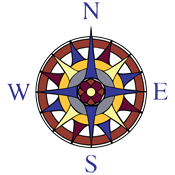Anatomy & Physiology Lecture (On-Level or Honors)
Description:
Did you know? ...The brain is only 2% of the mass of a body, but demands 20% of our oxygen and blood supply. Babies are born with 300 bones, but have only 206 by adulthood, and every second, your body produces 25 million new cells. The anatomy and physiology of the human body is a fascinating field filled with astonishing facts about how we function. Students interested in going into any health or wellness careers in the future should consider taking anatomy and physiology: medicine (doctor), nursing, sports or rehabilitative medicine, medical assistant, medical technician, radiology/imaging, physical therapy, veterinarian, or personal trainer, as examples.
In this full-credit high school lab science course, the class will move through systems of the body starting with a holistic look at the cells and tissues as the building blocks and homeostasis as the regulating process (unit 1). The class will study support and movement with an examination of the musculoskeletal system (unit 2), and "communication, control, and integration" (unit 3) through the central, peripheral, and autonomic nervous systems, endocrine system, and senses. The class will also cover "transportation and defense" (unit 4) which encompasses the circulatory system, lymphatic system, and immune responses. Finally, the class will examine respiration, nutrition and excretion (unit 5) encompassing respiratory and urinary system, upper and lower digestive tracts, and nutrition, metabolism, and more. The course will conclude with a look at reproduction and human development (unit 6) include the male and female systems, growth, and genetics/heredity.
Weekly, hands-on labs and dissections will correspond to lecture content to reinforce concepts. A partial list of labs includes: blood typing, muscle biophysics, enzymes/digestion, urinalysis, kidneys and blood filtration, and bone construction. Comparative vertebrate anatomy will be examined through four dissections: owl pellet (for vole and shrew skeletal remains), frog, dogfish, and fetal pig. A venipuncture lab unit will teach the basic principles and techniques of phlebotomy.
Classwork will come from assigned readings in the text along with online EdX lectures, viewed at home, from the University of Michigan. Students will also be assigned scientific and non-fiction books on anatomy and physiology (The Body: A Guide for Occupants; The Icepick Surgeon; Human Anatomy, a Visual History; Stiff, The Curious Lives of Human Cadavers; and Anatomies: A Cultural History of the Human Body) to read and discuss. Students will be required to write one formal lab report per semester and practice technical writing skills.
Note:This course has two class meetings: In-person Lecture from 2:00 pm- 2:55 pm on Thursdays and in-person Lab from 1:00 pm- 2:30 pm on Mondays. Students must enroll in both sections.
Prerequisites: High school Algebra I
Levels:
This course provides a substantive, full-credit experience on either an on-level or honors track. All class members complete the same core material and participate in the same labs. Students taking the course at the honors level have additional assignments and alternative scoring. Honors students will be required to write two research papers during the year--an anatomy topic in the fall and a physiology topic in the spring, using a minimum of five sources each. Honors students will also be expected to memorize anatomical structures observed during dissections and take a test identifying structures on labeled photographs. Finally, Honors students will be expected to memorize the majority of the human skeleton including the Latin names of bones and major muscles. Students must identify their level prior to the start of class. At any point in the year, a student may transition from honors to on-level if the workload exceeds the students' expectations.
Workload: Students should expect to spend 5-6 hours per week outside of class. Outside work must be completed to support the "flipped classroom" approach to this course in which the student pre-reads and prepares much of the lecture content at home, allowing in-person class time to be spent on highlights, clarification of challenging topics, class discussion, homework review, demonstrations, labs, and activities. In addition, students should plan for additional meeting and coordination time some weeks with their lab partners in-person, by phone, using shared documents, and/or via virtual meeting.
Assignments: All assignments will be posted on password-protected Canvas classroom management site. There, students access assignments, upload homework, take automated quizzes and tests, track grades, and message the instructor and classmates. Students will have a mandatory pre-lab assignment that must be completed prior to lab and will serve as the student's "ticket" into the lab session each week.
Assessments: Students will earn points for completed lab packets, chapter tests, and semester exams. Parents can calculate a letter grade using the student's points earned divided by points available. Parents may view all scoring and comments at any time through the Canvas site. Students have the option of paying for a verified certificate demonstrating successful completion of the online EdX Anatomy series which is used as a supplement to this course.
Textbook/Materials: Students should purchase or rent Anatomy & Physiology, 10th ed. by Patton (ISBN #978-0323528900). Students should purchase Netter's Anatomy Coloring (ISBN-13: 978-0323545037) and The Physiology Coloring Book (ISBN-13: 978-0321036636). Students should also set up access to EdX's online lecture series "Anatomy" by the University of Michigan.
Lab/Supply Fee: A class fee of $125 is due payable to the instructor on the first day of class for a composition notebook, graph paper, lab equipment and supplies, and safety supplies.
What to Bring: Students should bring a paper or a notebook, pen or pencil, and a set of colored pencils to class each week.
What to Wear: Students should not wear any loose, drapey clothing to lab. They should also come to class with long hair tied back and should wear closed toe shoes.
Credit: Homeschool families may wish to count this course as a full credit in Lab Science for purposes of a high school transcript.
10.09.23.06
We are sorry but registration for this event is now closed.
Please contact us if you would like to know if spaces are still available.

